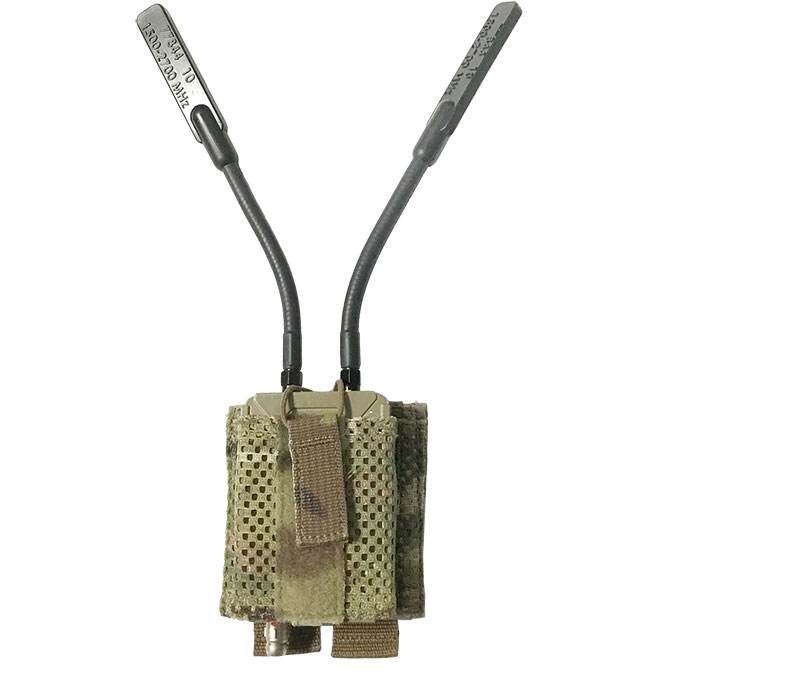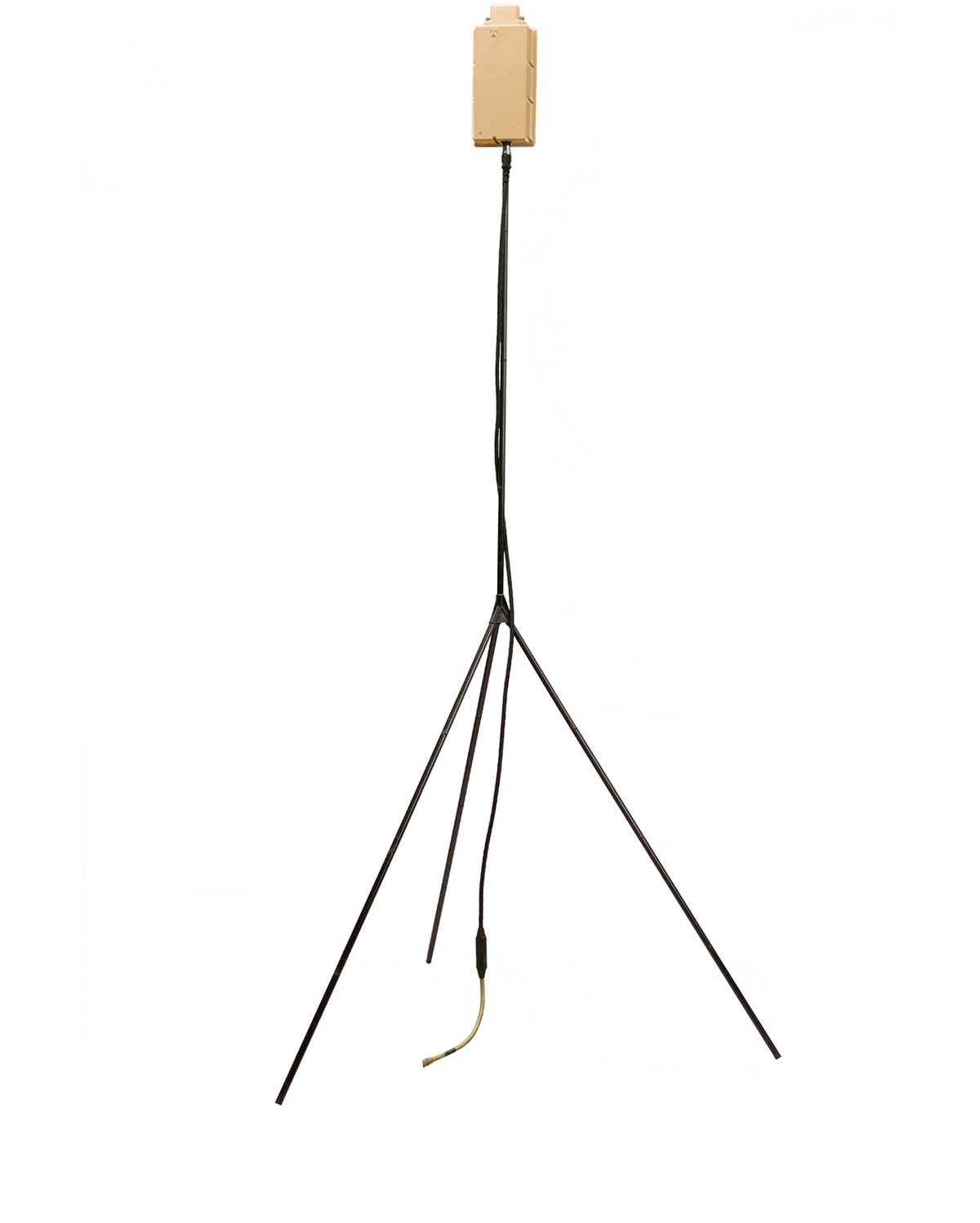Antennas
AeroVironment offers a suite of antennas to meet diverse mission needs with connection ranging from 5 km up to 60 km utilizing the LRTA. Antennas are full AES-256 bit encryption capable which enables secure command and control connectivity and are designed primarily for surface operations and are either M125 or M346 capable.

pDDL
In order for our unmanned aircraft systems to extend warfighters’ situational awareness, they must be able to connect to a reliable, secure wireless network that can operate in challenging environments. Ultra-compact and lightweight (7.1 oz), the AeroVironment Pocket DDL (pDDL) transceiver can be easily integrated into any tactical vest/utility belt and features a digital data link connection radius of 5 km with AES-256 data encryption for secure communications. AeroVironment’s pDDL provides maximum flexibility and interoperability between small airborne and ground systems with limited power requirements, and ensures available bandwidth to maximize the number of systems operating in a given area.

Standard Range Antenna
AeroVironment’s Standard Antenna combines a lightweight and portable design, enabling command and control operational link range up to 20 km. Battlefield tested and proven for mission flexibility in all environments, the antenna is configurable as an omnidirectional or patch antenna for varying operational requirements. Digital Data Link with AES-256 bit encryption provides a secure data connection.

Extended Range Antenna (ERA)
The ERA is a lightweight, portable antenna array kit designed to integrate seamlessly with AeroVironment’s standard RF head antenna to support a diverse range of missions. The ERA add-on kit narrows the antenna beam width, which enables an effective command and control range extension up to 40 kilometers (24.9 miles) or 100 percent greater controllable range over the standard RF antenna with minimal impact to its size, weight, and power (SWAP) footprint. The included RFU switch allows users to toggle between omnidirectional and extended range antenna modes. Ideal for long-range operation, the extended range antenna mode narrows the beam while the omnidirectional antenna mode is ideal for short range launch and recovery operations.

Long Range Tracking Antenna (LRTA)
The AeroVironment Long Range Tracking Antenna (LRTA) enables up to 60 km command and control of unmanned aircraft systems, providing critical ISR data and multi-mission flexibility with an expanded stand-off operational range. The LRTA provides complete control of an aircraft and payload, video display and recording, mission planning, real-time moving map display, status information, and high-resolution image capture. The LRTA’s directional antenna is mounted on a tracking positioner and allows for automatic or manual tracking of an aircraft. In addition, an omni-directional antenna provides redundancy and 360-degree coverage with reduced range capabilities.
Compatible with M1/2/5 and M3/4/6 operating bands, the LRTA is designed to be operated in a two-tier system, meaning there is a launch and recovery group in the field and a command and control group in a command center. At the appropriate time, the launch and recovery group “hands off” control of the aircraft to the command and control center allowing for a greater situational awareness perimeter.
